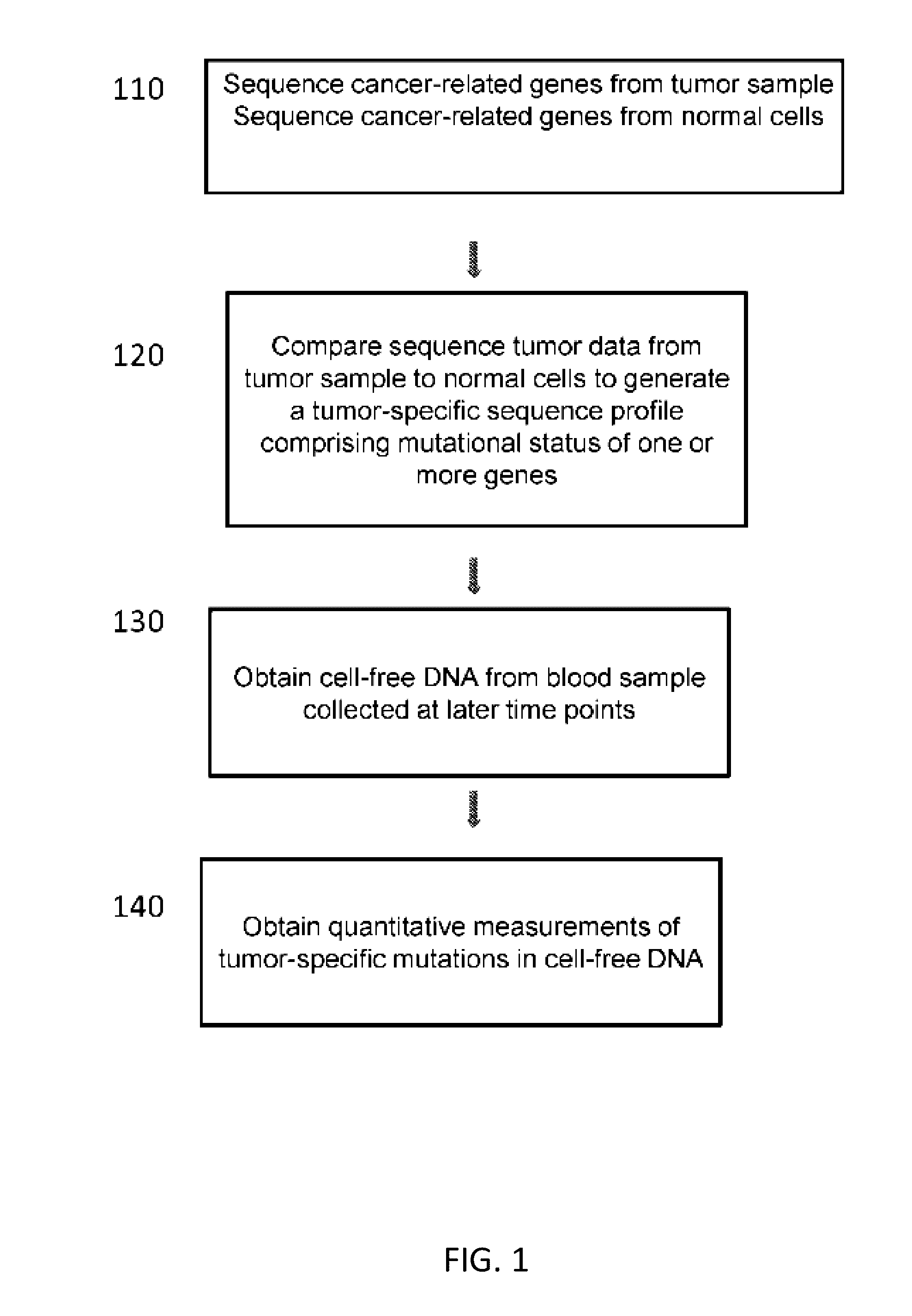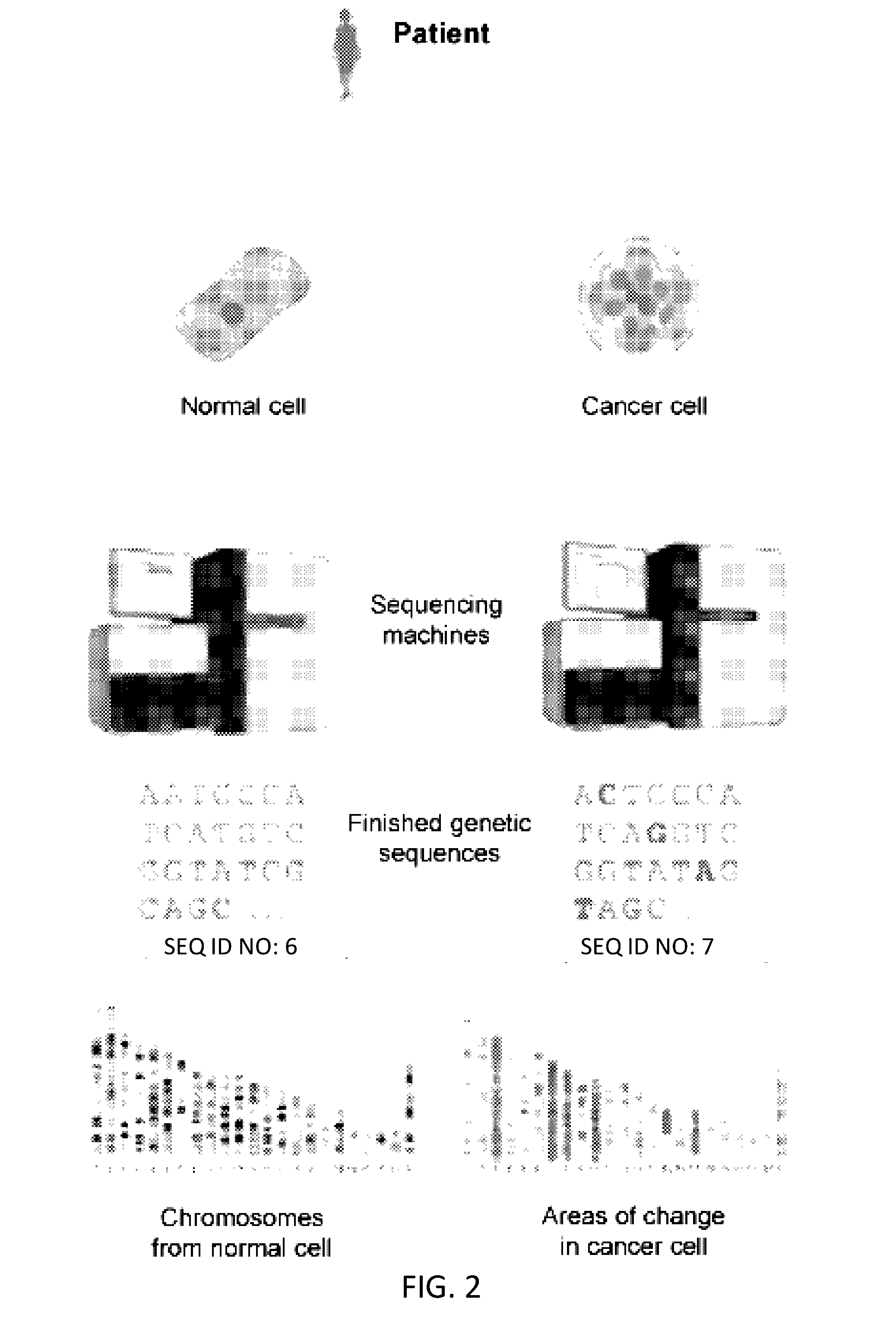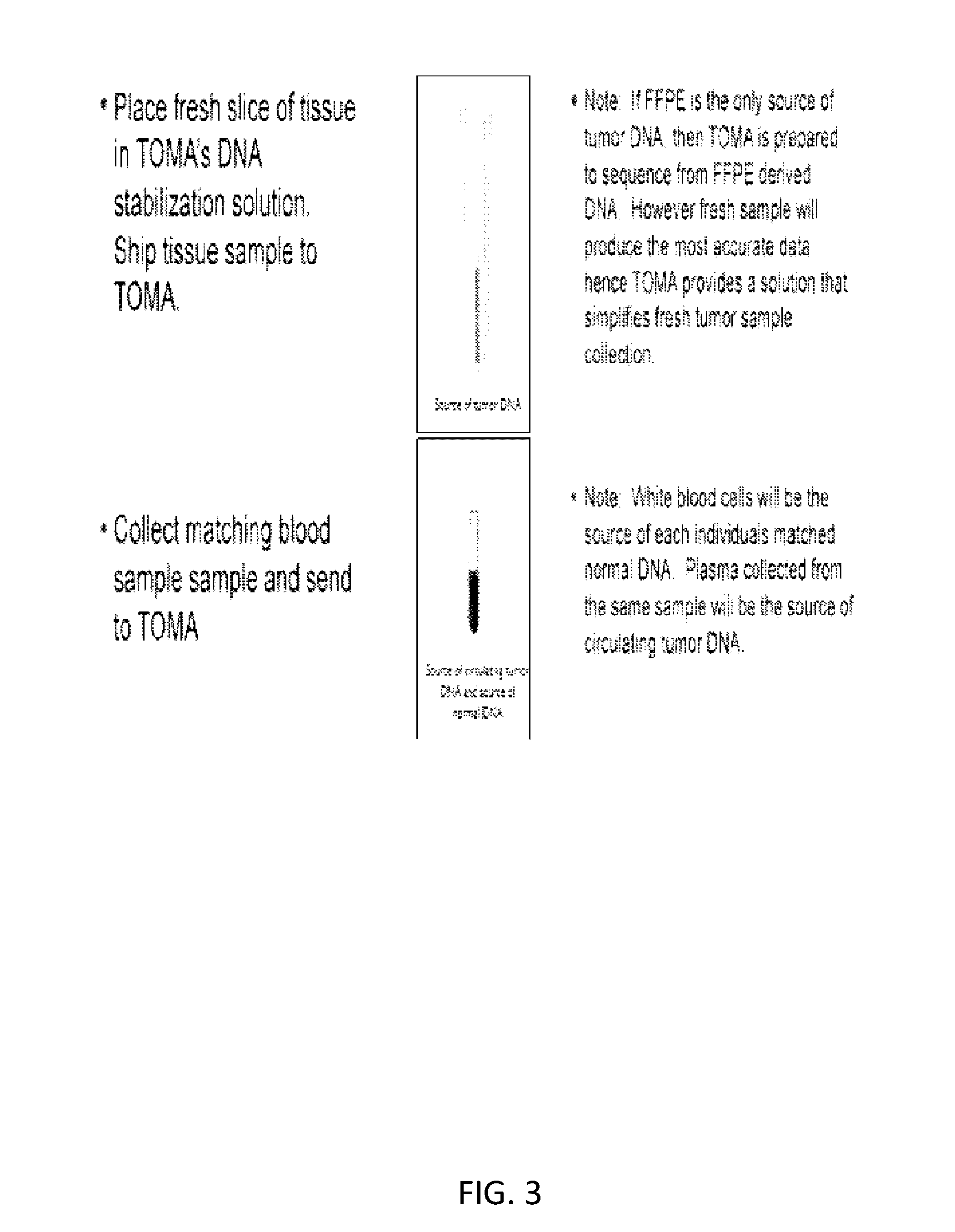Methods for assessing cancer
a cancer and cancer technology, applied in the field of methods for assessing cancer, can solve the problems of limiting the utility of tumor biopsy for monitoring the cancer status of a subject, the serious challenges of modern medicine, and the inability to accurately diagnose cancer,
- Summary
- Abstract
- Description
- Claims
- Application Information
AI Technical Summary
Benefits of technology
Problems solved by technology
Method used
Image
Examples
example 1
[0296]FIG. 10 depicts a method used to assess a cancer in a subject. A subject had a colonoscopy and is discovered to harbor a colon tumor. A tumor biopsy and blood draw were collected from the subject at time point 0, and are used to aid in the diagnosis of colon cancer in the subject. The tumor and normal cells from the first blood draw were sequenced. Sequencing revealed the presence of three mutations in the subject's tumor. The mutations were point mutations in the APC, KRAS, and TP53 genes. The stage of the subject's cancer was determined. The subject underwent a first treatment (surgery) to remove the tumor. Upon the first treatment, a second blood draw was performed. It was determined that the subject's tumor had metastasized. The subject was administered as second therapy (chemotherapy) to manage the cancer. Subsequent blood draws are performed to assay the mutational status of the three genes in cell-free DNA from the blood.
example 2
Validation Assay for a Tumor-Specific Mutation in the Subject with Colon Cancer
[0297]NCI-H1573 (CRL-5877) cell lines harboring the KRAS G12A mutation (mu) were obtained as frozen stocks from the American Type Culture Collection (ATCC). Genomic DNA (gDNA) was prepared from cell line material using a commercially available kit (DNeasy Blood & Tissue kit, QIAGEN), according to the manufacturer's suggested protocol. Estimates of DNA concentration were obtained spectrophotometrically by measuring the OD260 (NanoDrop 1000, Thermo Fisher Scientific Inc.).
[0298]Genomic DNA from NA18507 cell lines was used as a surrogate for wild-type DNA (wt) and obtained as purified stocks (Coriell). Two microliters of a mixture containing wt (30 ng) and mu (6 ng) DNA was assembled into a 20 μl ddPCR reaction mix from 2×ddPCR supermix for probes, 0.2 uM final of each forward primer (wt: 5′-AGATTACGCGGCAATAAGGCTCGGTTGGCATTGGATACTACTTGCCTACGCCACC-3′ (SEQ ID NO: 1); mu: 5′AATAGCTGCCTACATTGGGTTCGGTCGTAACTTAGGA...
PUM
| Property | Measurement | Unit |
|---|---|---|
| diameter | aaaaa | aaaaa |
| Tm | aaaaa | aaaaa |
| Tm | aaaaa | aaaaa |
Abstract
Description
Claims
Application Information
 Login to View More
Login to View More - R&D
- Intellectual Property
- Life Sciences
- Materials
- Tech Scout
- Unparalleled Data Quality
- Higher Quality Content
- 60% Fewer Hallucinations
Browse by: Latest US Patents, China's latest patents, Technical Efficacy Thesaurus, Application Domain, Technology Topic, Popular Technical Reports.
© 2025 PatSnap. All rights reserved.Legal|Privacy policy|Modern Slavery Act Transparency Statement|Sitemap|About US| Contact US: help@patsnap.com



